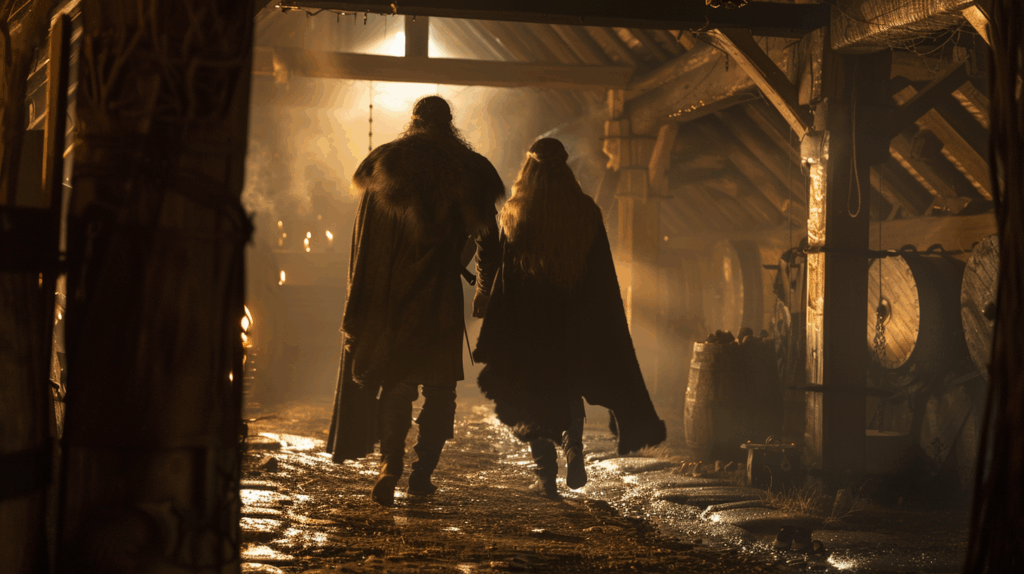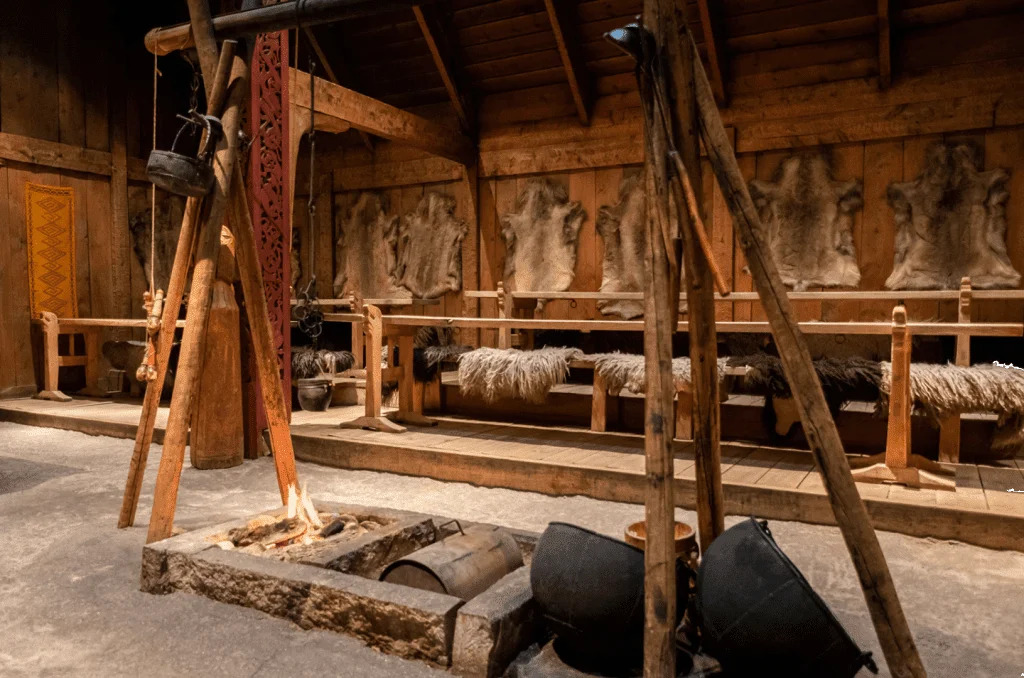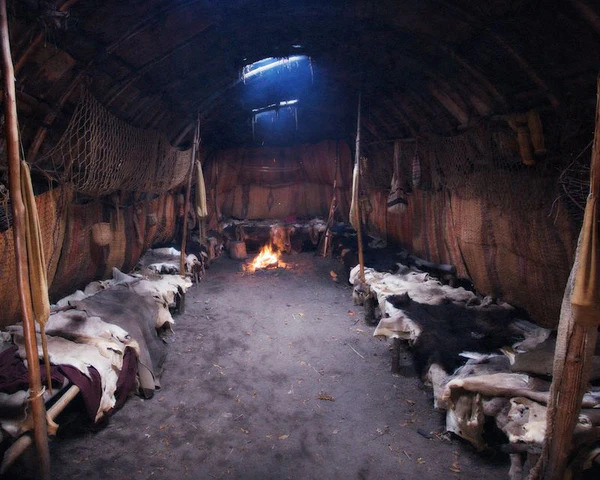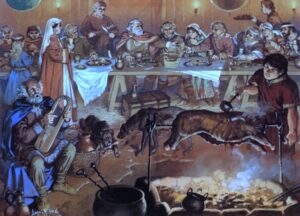
They raided, sailed, and slaughtered their way across Europe, but even the fiercest Vikings needed somewhere to lay their heads. And when night fell, the longhouse became more than a home. It was a smoky, crowded, strangely tender world where families, servants, and livestock all shared the same bed and air, and where intimacy had to be negotiated as cleverly as war.
One Room, a Hundred Secrets
Forget bedrooms. A typical Viking longhouse was one vast chamber of timber and smoke, with sleeping benches along the walls and a central fire roaring day and night.
Children, parents, slaves, guests — all slept within arm’s reach. Privacy was a fantasy. Yet somehow, the business of life (and love) carried on.
What Happened Under the Furs Stayed Under the Furs
Those enormous sleeping pelts weren’t just for warmth. Beneath them, couples vanished into silence and shadow. The rest of the household simply turned away and pretended not to notice, an unspoken code of manners that kept peace and sanity intact.
Sagas even mention it obliquely: “They turned to their side and took no notice.” Everyone knew. No one commented.

The Symphony of Distraction
Between crackling fires, snoring livestock, and the endless winter winds, Viking homes were rarely quiet. The very noise that made them chaotic also gave cover for moments of passion. The longhouse became a place of rhythmic sounds — chopping wood, creaking timbers, laughter — and sometimes, the soft rustle of furs.
When the Barns Came in Handy
For couples unwilling to perform before an audience, barns and byres were convenient retreats. Warm, dark, and lined with hay, they were ideal for stolen moments.
Bathhouses too had reputations — steam rooms heated by stones, often mixed-sex, often candle-lit. Even medieval clerics complained that Norse people “lingered too long in their bathing,” which says rather a lot.

The Privilege of Curtains
Not everyone had to hide under hides. Wealthier households, particularly chieftains and merchants, sometimes built curtained alcoves or small adjoining chambers for sleeping and childbirth. Archaeologists have even found “bedding boxes” with carved fertility symbols, a rare glimpse of Viking sensuality turned sacred.
No Shame, Just Honour
The Vikings didn’t share the Christian prudishness that came later. Sex wasn’t sinful; betrayal was. Adultery, seduction, and illegitimate children could all spark feuds, but physical intimacy itself was part of the natural order.
A man’s reputation depended not on chastity but on honesty, and sometimes on his skill as a lover, if the sagas are to be believed.
Desire, Practicality, and the Cold
Viking love was physical, pragmatic, and entirely entwined with survival. Firelight, furs, and breath visible in the air — that was their bedroom. It wasn’t tender in the modern sense, but it was human: full of warmth, urgency, and the quiet understanding that life could end with the next voyage or raid.
The Fire Never Slept
When the longhouse dimmed and the fire sank to embers, the day’s noises melted into a low murmur of breath and shifting wood. The same hearth that cooked their meals and warmed their children also witnessed every secret of their nights.
And somewhere under the furs, two figures moved closer, their shadows flickering on the beams — proof that even a people of war understood the small, essential peace of touch.
Hungry for more?
Read Weird Things Vikings Did Before Bed — the habits, fears, and nightly rituals that made even a warrior’s bedtime a matter of myth.







